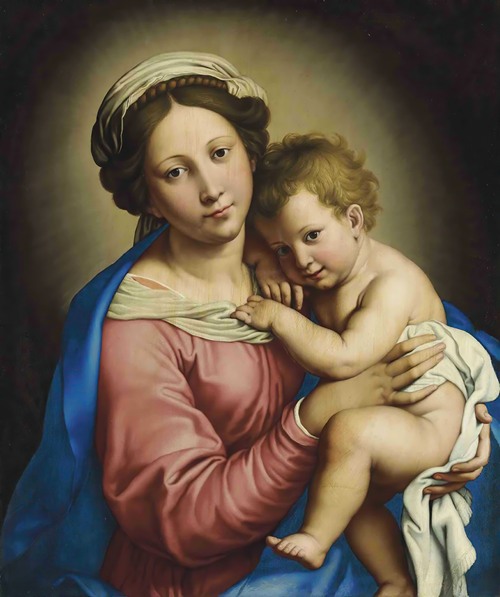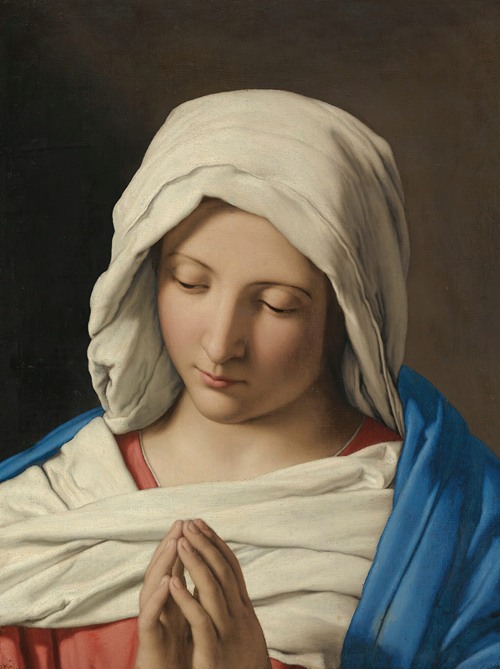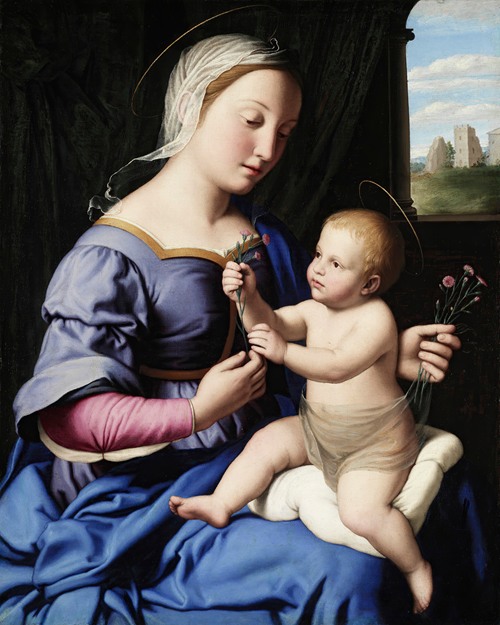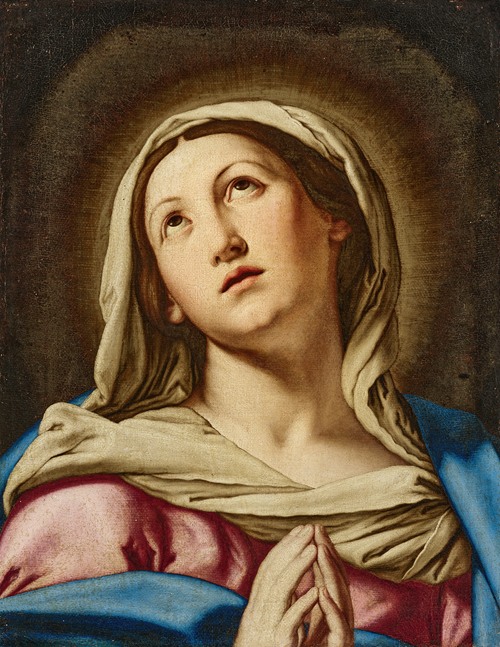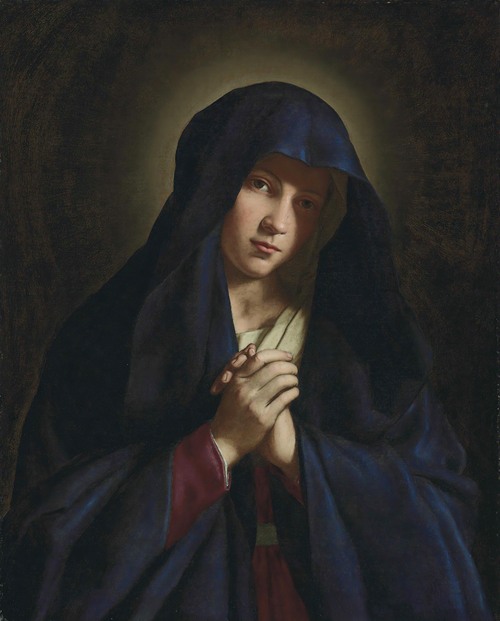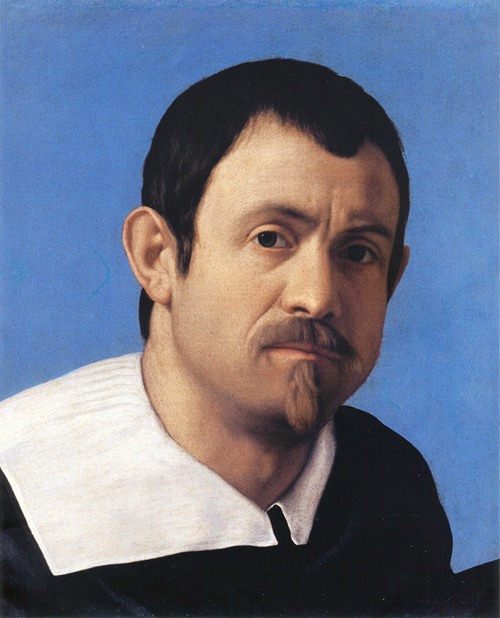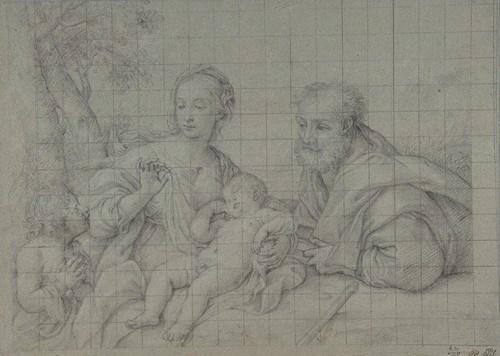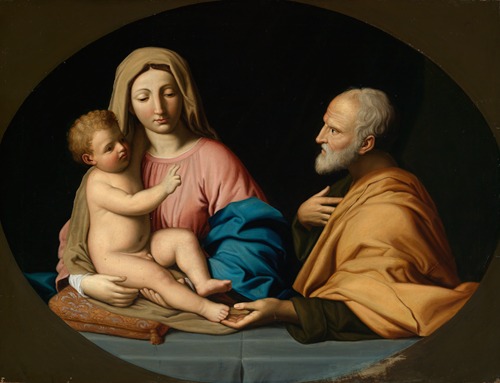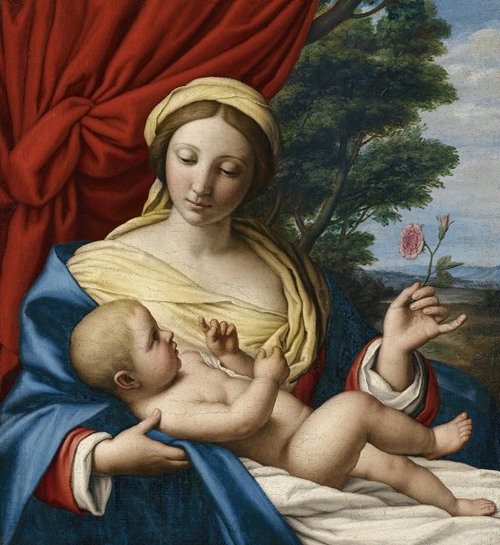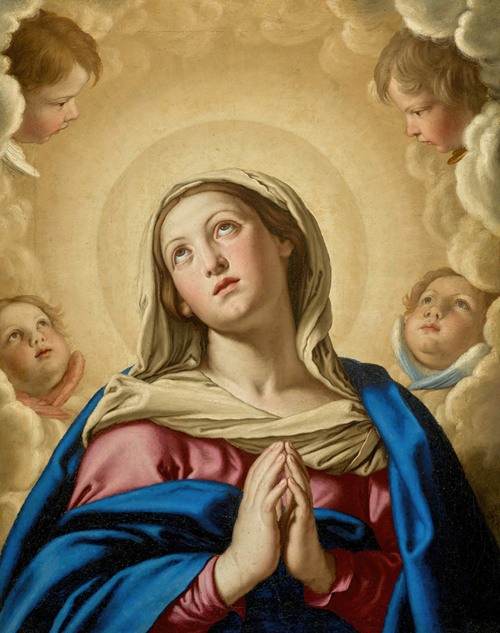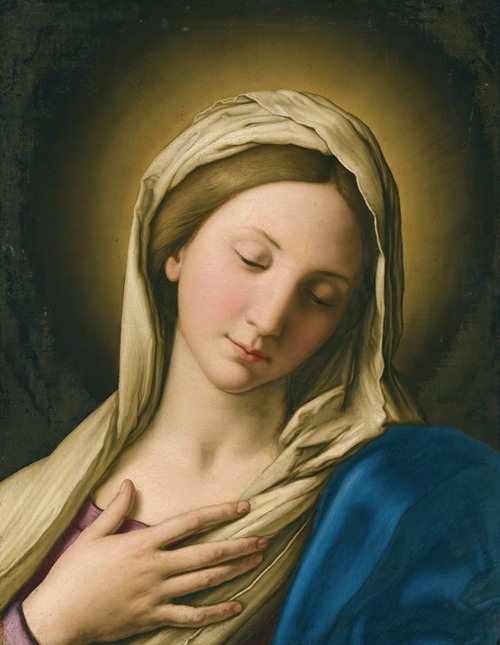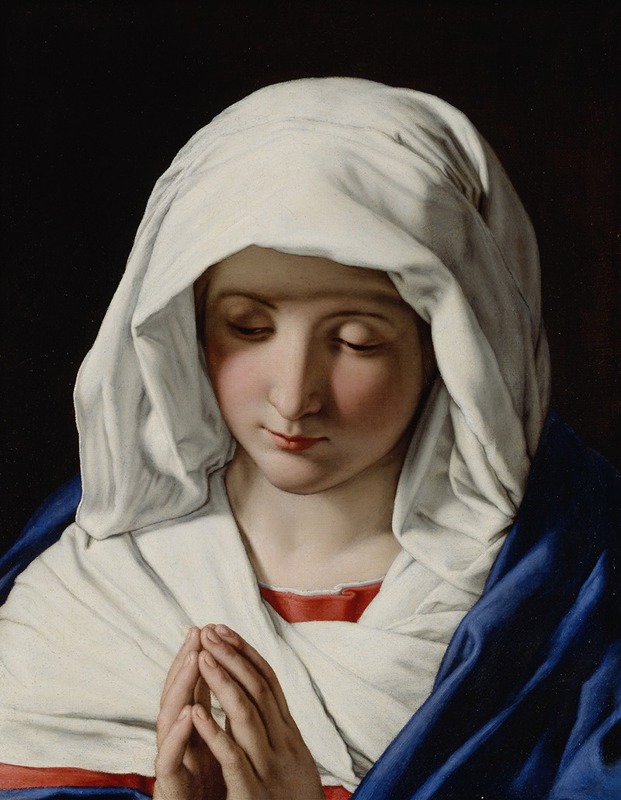
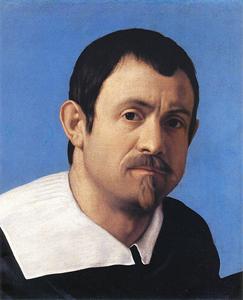
Giovanni Battista Salvi da Sassoferrato, also known as Giovanni Battista Salvi, was an Italian Baroque painter, known for his archaizing commitment to Raphael's style. He is often referred to only by the town of his birthplace (Sassoferrato), as was customary in his time, and for example seen with da Vinci and Caravaggio.
The details of Giovanni Battista Salvi's biography are very sparse. He was born in the small town of Sassoferrato in the Marche region of central Italy, half-way between Rome and Florence, east of Apennines.
Sassoferrato was apprenticed under his father, the painter Tarquinio Salvi; fragments of Tarquinio's work are still visible in the church of Saint Francis in Sassoferrato. The rest of Giovanni's training is undocumented but it is thought that he worked under the Bolognese Domenichino, a main apprentice of Annibale Carracci (c. 1580). Two other Carracci trainees Francesco Albani and Guido Reni also influenced Sassoferrato. In Francis Russell's view, Reni was as much Sassoferrato's mentor as Domenichino was his master. His paintings also show the influence of Albrecht Dürer, Guercino, and above all Raphael. He appears to also have been influenced by Pierre Mignard, whom he may have met in Rome in the 1630s.
Few public commissions by Sassoferrato exist, and, like Carlo Dolci he seems to have concentrated on producing multiple copies of various styles of devotional image for private patrons, a demand fuelled by the Counter-Reformation of the Catholic Church. Apart from his many smaller works, his paintings include some at the Benedictine convent of San Pietro in Perugia (1630) and the imposing altarpiece in Santa Sabina, Rome, portraying La Madonna del Rosario (1643). In 1683 Cardinal Chigi presented Sassoferrato's self-portrait to Cosimo III de' Medici.
Sassoferrato died in 1685. His will is dated June 29 of the same year.
